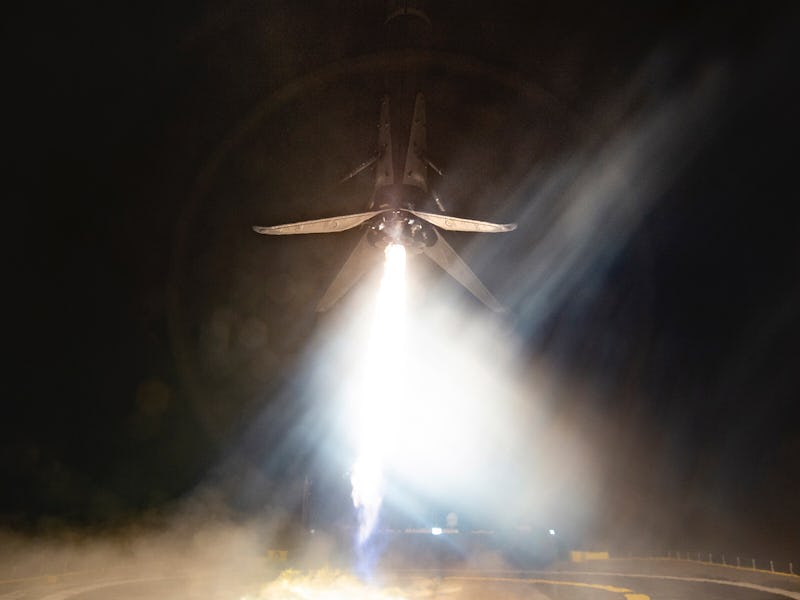SpaceX has put its latest Falcon 9 through its paces. On Thursday, the space-faring firm shared two images of its first “Block 5” rocket, having successfully completed two missions in the space of three months. The scorched booster is integral to the company’s future plans to launch the same Falcon 9 rocket twice in just 24 hours.
The images, shared on Instagram, show the booster standing on top of the droneship Of Course I Still Love You. The mission in question launched from the Cape Canaveral Air Force Station in Florida on August 7 at 1:18 a.m. Eastern time from Space Launch Complex 40, deploying the Merah Putih geostationary commercial communications satellite for PT Telekom Indonesia to provide service to the country and other areas for 15 or more years. It was the first successful reuse of the “Block 5” design, and after the satellite was deployed 32 minutes after liftoff, the booster landed safely on the Atlantic Ocean droneship.
Falcon 9 on top of the droneship.
See also: SpaceX Just Reused a Falcon 9 Block 5 in Major Step for Super-Fast Launches
The Block 5 was designed with reusability in mind, which can help recuperate the costs associated with building new rockets. While older Falcon 9s successfully relaunched after missions, CEO Elon Musk is aiming to eventually reuse rockets 10 times with just pre-launch inspections and 100 times with bigger refurbishments. Musk told reporters before the first Block 5 mission that the company wants to launch the same rocket twice in 24 hours no later than next year.
The first Block 5 mission sent the Bangabandhu Satellite-1 into orbit on May 11, Bangladesh’s first geostationary communications satellite. It’s aimed at providing least 15 years of broadband internet connectivity to rural areas. The satellite was deployed around 33 minutes after launch, before landing on the Of Course I Still Love You droneship in the Atlantic Ocean 340 miles south east of the Kennedy Space Center.
SpaceX is currently scheduled to launch the Telstar 18 Vantage communications satellite from the Cape Canaveral Air Force Station on August 23.
While the Block 5 above may seem a little worse for wear, the experience will help SpaceX reach its goals and ultimately prepare for a mission to Mars.
